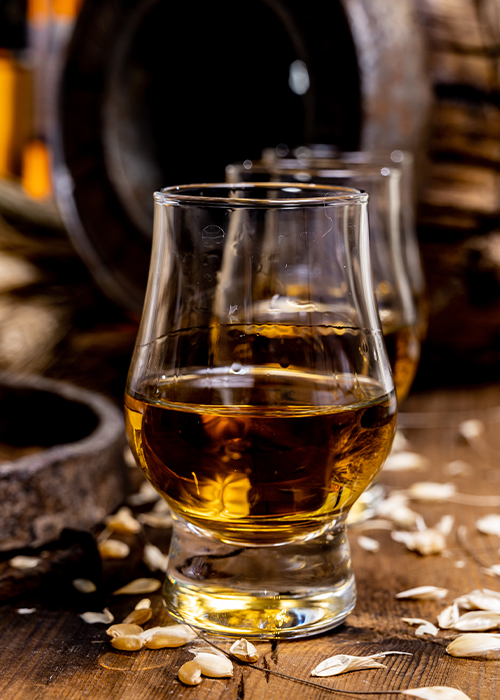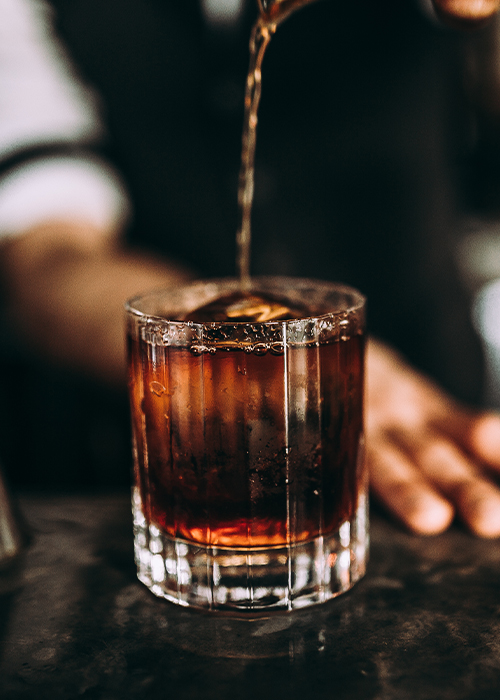All September on VinePair, we’re turning our focus to America’s spirit: bourbon. For our third annual Bourbon Month, we’re exploring the industry legends and innovators, our favorite craft distilleries, new bottles we love, and more.
From Ireland and Japan, to Scotland and Canada, whiskey — or whisky, depending on where you’re drinking it — is crafted around the world. With each country using its own manufacturing and aging processes, though, the resulting liquid is as unique as its country of origin.
Just as Scotch whisky can only hail from Scotland, bourbon is a type of whiskey made only in the United States. But what sets the storied American hooch apart from other whiskeys enjoyed across the globe? Keep reading to learn more about how bourbon distinguishes itself from the pack.
Origin
The origins of whiskey are murky, with both the Irish and Scottish claiming to have been first to the still. Some sources suggest that the first written record of whiskey can be found in the Irish Annals of Clonmacnoise, purportedly written in 1405, predating Scotch production by about 90 years.

Whatever whiskey’s true origin, the creation of bourbon was still centuries away. According to bourbon historian Michael Veach, Americans didn’t begin producing the native spirit until the 1820s. Veach notes that the first written account of bourbon occurred in 1821, when it was mentioned in an issue of the Western Citizen, a Kentucky-based newspaper.
Five years later, a letter from a Lexington grocer to a distiller detailed the benefits of charring a barrel to improve whiskey’s flavors. But it was Dr. James C. Crow, a Scottish immigrant, whom Veach credits with refining the quality of bourbon in the 1830s.
Production
A major difference between whiskey on a broad scale and bourbon lies in the ingredients. In order for a bourbon to be labeled as such, it must include a mixture of at least 51 percent corn, whereas whiskey’s ingredients can run the gamut from wheat, rye, barley, and corn.
But there’s more: Bourbon must also be made in the U.S., aged a minimum of two years in new, charred oak barrels, and cannot contain flavor or color additives. While Kentucky, bourbon’s birthplace, is the center for a majority of its production, the spirit can technically be made around the country.
Whiskey can hail from literally anywhere in the world and depending on the country, is made using a wide range of production, regulatory guidelines, and aging processes. Even in America, there is plenty of whiskey distilled that does not fall into the bourbon category, such as Tennessee whiskey and rye whiskey.
Flavor
Featuring corn as the predominant ingredient in its mash, bourbon has a perceived sweeter overall profile than most whiskey, but can still develop remarkable complexity. Depending on the origin and mash bill, bourbon can display notes of baking spices, black pepper, fruit, vanilla, caramel, and even cocoa.

Whiskey’s flavors vary wildly, from a full-bodied and smoky Scotch, to a more delicate and mellow Japanese whisky. Even Tennessee whiskey has a distinctive profile, imparted during its unique charcoal-filtering method known as the Lincoln County Process.
Cocktails
Bourbon makes a wonderful sipper on its own (bonus if you’re anywhere near a fireplace), but it really shines in classic cocktails such as the Old Fashioned and the Boulevardier. It’s enduring appeal as a cocktail ingredient means it’s also a feature in more modern creations like the Paper Plane, a refreshing mix of bourbon, Aperol, Amaro Nonino, and lemon juice.
Scotch whisky also makes a terrific cocktail base, showing off its versatility in the Penicillin, Rob Roy, and the Blood and Sand. For the Irish whiskey lover, an Irish Coffee is always a good choice, and if you have a bottle of Japanese whisky, a perfectly constructed Highball is the way to go.
What the Pros Think
For Erick Arce Marin, the mixologist at Costa Rica’s Tabacón Thermal Resort & Spa, bourbon is a great starter spirit for drinkers looking “to try whiskey for the first time,” due to its sweeter notes. While bourbon is often a popular choice with younger customers, Marin notes that other whiskeys can present “stronger and more complex flavors,” making them somewhat of an acquired taste, best appreciated “once a more comprehensive understanding and knowledge of the spirit have been achieved.”
